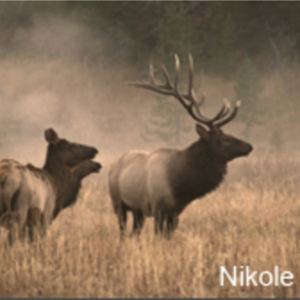Weekly Cribbage Tournament
Oct 18 Tuesday
Oct 25 Tuesday
Nov 01 Tuesday
Nov 08 Tuesday
Nov 15 Tuesday
Nov 22 Tuesday
Nov 29 Tuesday
Dec 06 Tuesday
Dec 13 Tuesday
Dec 20 Tuesday
Dec 27 Tuesday
Jan 03 Tuesday
Jan 10 Sunday
Jan 17 Tuesday
Jan 24 Tuesday
Jan 31 Tuesday
Feb 07 Tuesday
Feb 14 Tuesday
Feb 21 Tuesday
Feb 28 Tuesday
Mar 07 Tuesday
Mar 14 Tuesday
Mar 21 Tuesday
Mar 28 Tuesday
Apr 04 Tuesday
Apr 11 Tuesday
Apr 18 Tuesday
Apr 25 Tuesday
May 02 Tuesday
May 09 Tuesday
May 16 Tuesday
May 23 Tuesday
May 30 Tuesday
6:30 PM
The Eagles Lodge - Bozeman
Bozeman Region
Holiday Tours and a Santa’s Vintage Toy Shoppe Christmas Tree Display
Nov 22 Tuesday
Nov 23 Wednesday
Nov 24 Thursday
Nov 25 Friday
Nov 26 Saturday
Nov 27 Sunday
Nov 29 Tuesday
Nov 30 Wednesday
Dec 01 Thursday
Dec 02 Friday
Dec 03 Saturday
Dec 04 Sunday
Dec 06 Tuesday
Dec 07 Wednesday
Dec 08 Thursday
Dec 09 Friday
Dec 10 Saturday
Dec 11 Sunday
Dec 13 Tuesday
Dec 14 Wednesday
Dec 15 Thursday
Dec 16 Friday
Dec 17 Saturday
Dec 18 Sunday
Jan 03 Tuesday
Jan 04 Wednesday
Jan 05 Thursday
Jan 06 Friday
Jan 07 Thursday
1 PM
Moss Mansion
Fairs & Festivals
Billings Region
Portugal. The Man
Nov 16 Wednesday
8 PM
The Wilma
Live Music & Concerts
Missoula Region
Paper Bird and The Ballroom Thieves
Nov 16 Wednesday
8 PM
Top Hat Lounge
Live Music & Concerts
Missoula Region
American Piano Quartet
Nov 16 Wednesday
Nov 16 Wednesday
7:30 PM
UM Dennison Theatre
Live Music & Concerts
Missoula Region
Flat Bag Exhibit
Nov 01 Tuesday
Nov 02 Wednesday
Nov 03 Thursday
Nov 04 Friday
Nov 05 Saturday
Nov 06 Sunday
Nov 07 Monday
Nov 08 Tuesday
Nov 09 Wednesday
Nov 10 Thursday
Nov 11 Friday
Nov 12 Saturday
Nov 13 Sunday
Nov 14 Monday
Nov 15 Tuesday
Nov 16 Wednesday
Nov 17 Thursday
Nov 18 Friday
Nov 19 Saturday
Nov 20 Sunday
Nov 21 Monday
Nov 22 Tuesday
Nov 23 Wednesday
Nov 24 Thursday
Nov 25 Friday
Nov 26 Saturday
Ninepipes Museum of Early Montana
Arts & Cultural
Flathead Region
Moscow Ballet’s Great Russian Nutcracker
Nov 15 Tuesday
7:30 PM
Mansfield Theater
Performing Arts & Theater
Great Falls Region
Adult Education: Night Photography
Nov 15 Tuesday
6:30 PM
Rocky Mountain School of Photography
Missoula Region

 Jenna Caplette migrated from California to Montana in the early 1970s, first living on the Crow Indian reservation. A Healing Arts Practitioner, she owns Bozeman BodyTalk & Integrative Healthcare. For relaxation, she reads novels and walks the trails around Bozeman with her four legged companion. Oh, and sometimes she manages to sit down and write.
Jenna Caplette migrated from California to Montana in the early 1970s, first living on the Crow Indian reservation. A Healing Arts Practitioner, she owns Bozeman BodyTalk & Integrative Healthcare. For relaxation, she reads novels and walks the trails around Bozeman with her four legged companion. Oh, and sometimes she manages to sit down and write.








